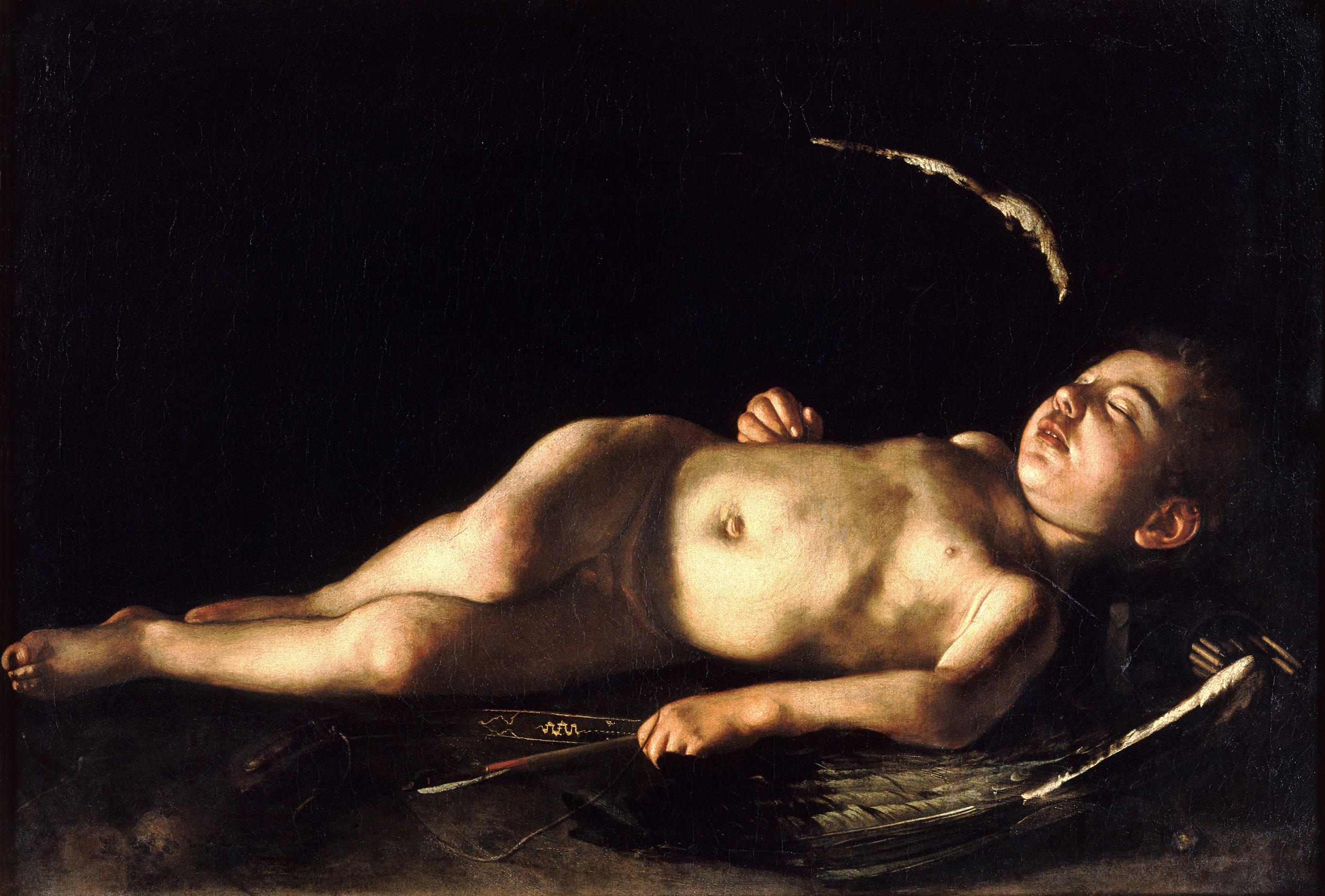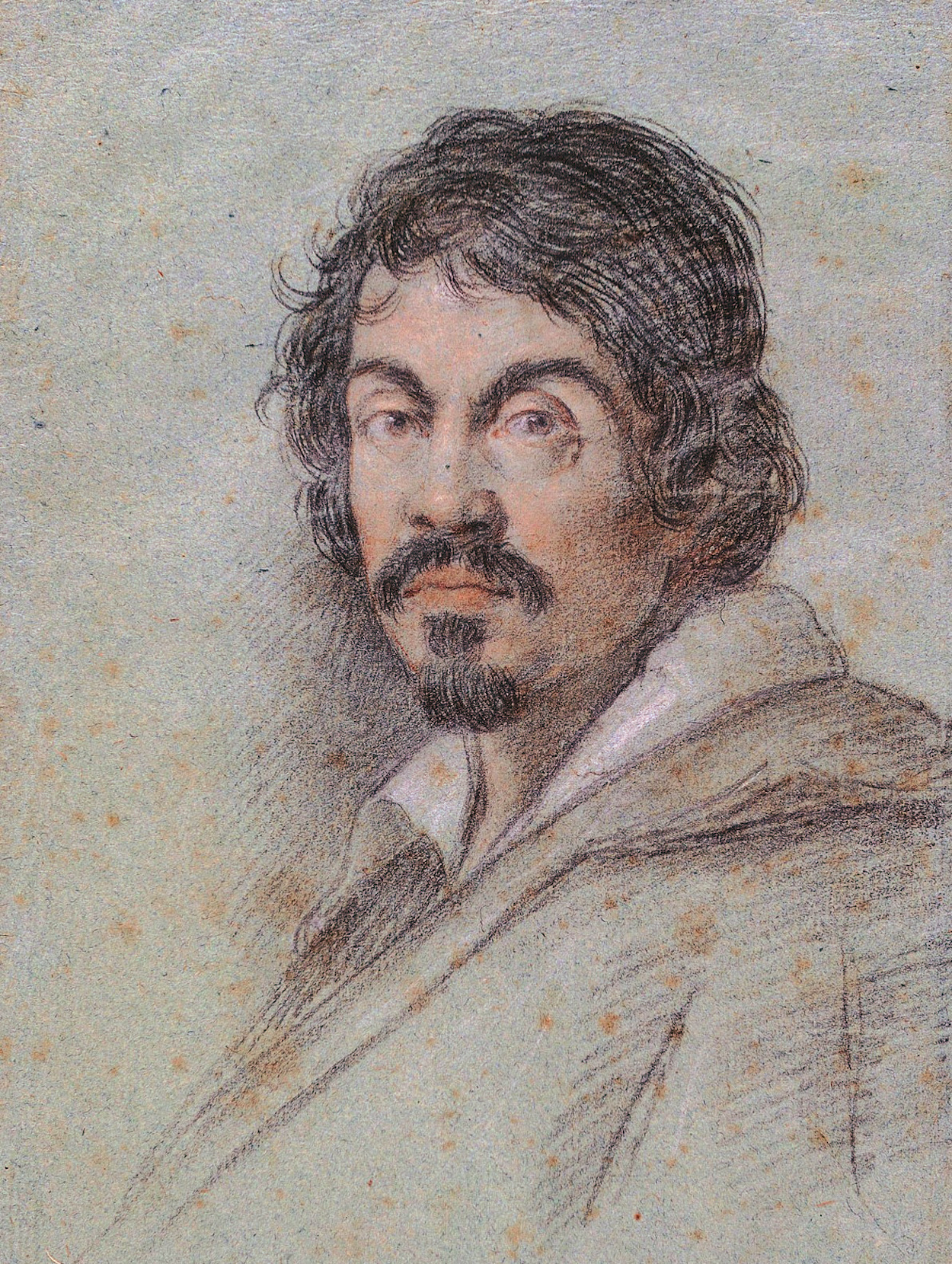I think this painting is absolutely magnificent. This curiously somber little picture is the only classical relic of Caravaggio's time on Malta, to which an old inscription on the back of the canvas ascribes it. As the painting was in Florence by 1618, Caravaggio may have taken it with him when he fled.
The plump, solid figure is well articulated by the artist who had learned in Rome all he needed to know about human anatomy from antiquity and the Renaissance, and yet he is affectionately observed, as though he were a mere mortal child asleep. In the darkness it is possible to make out his wings — he is not a young putto — and the quiver of arrows on which he sleeps, the bow with its broken string, and the arrow, with a tinge of red, that he holds in his hand. In human affairs he plays a symbolic role. Here Cupid is not in charge of fate; while forgetful Love sleeps on, lovers cannot cope with the clamorous demands of their passions, and they are lost. But even if Love has been vanquished in the past — his bowstring is broken — he has ammunition, the quiver and the arrows, with which he can fight again.




Sleeping Cupid
oil on canvas • 75 x 105 cm
 Caravaggio
Caravaggio